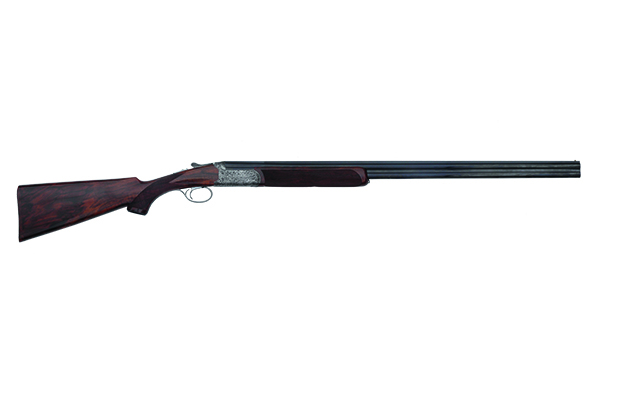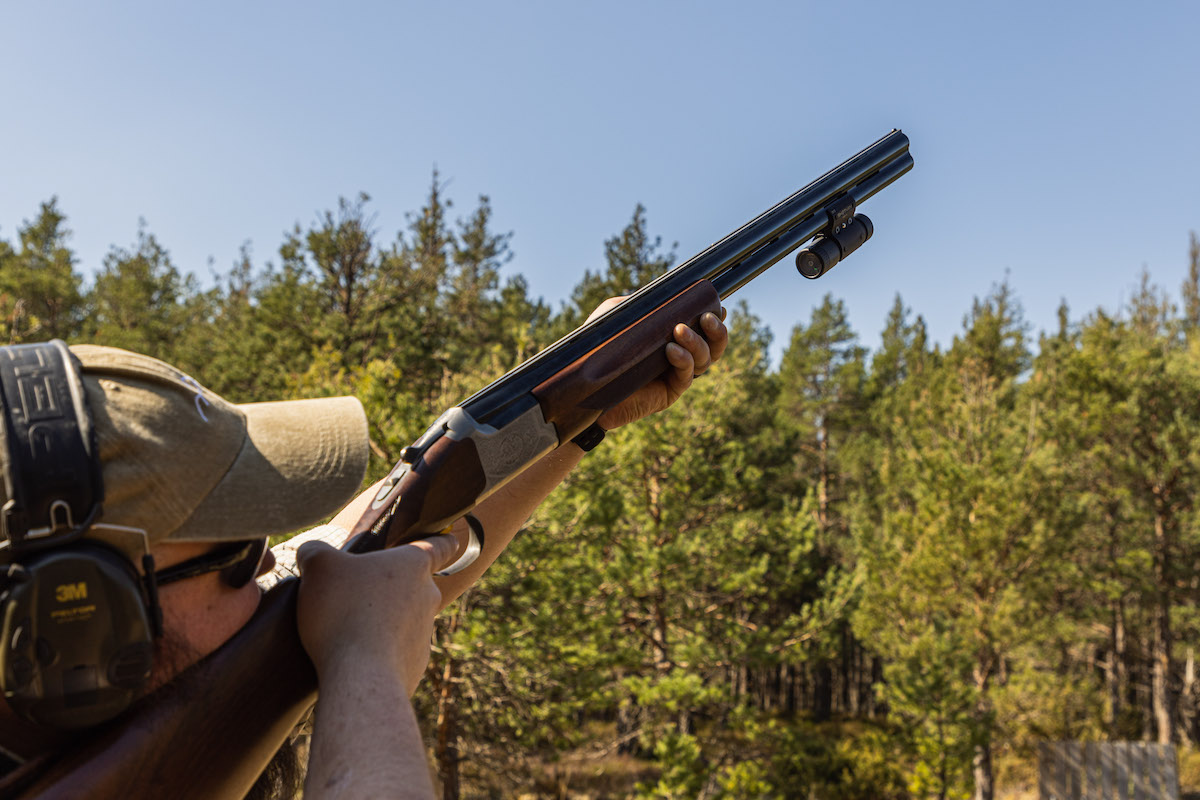William Powell Phoenix 28-bore
This elegant game gun exudes tradition blended with purpose, writes Lewis Potter

William Powell Phoenix 28-bore
Overall Rating: 89%
Manufacturer: William Powell
Pros: Fast and light; a fine gun for the good shot
Price as reviewed: £7,020
Cons: 28-bore owners expect to pay a premium over the 12-bore because of the 'exclusivity' to the market
It is nearly six years since I tested a Powell Phoenix gun, which was the first review I did for this maker after it moved from Birmingham to Banbury. Named after the mythical bird that regenerates by rising from the ashes of its predecessor, it was the first over-and-under in its continental range. This range is so named because these guns are manufactured in Italy to Powell’s specification by the respected gunmakers Battista Rizzini, a fact which, to its credit, Wm Powell makes no secret about.
In that last review — of a 12-bore — I made a few comments on what I personally felt might be minor improvements, so I was looking forward to examining this William Powell Phoenix 28-bore on test.
First impressions
Any 28-bore like this gun, with a 15in length of pull and full 30in barrels, is going to appear leggy and impressively slim. However, length does not translate into weight as, even loaded, it registered just under 6lb on my scales. This combination of lightness and length translates into a fast-handling but very pointable gun, though, of course, that same lack of weight is no aid for the shooter who is a bit lethargic on the swing.
The point of balance is almost right on the barrel hinge point, which gives a neutral feel and would be an aid to snap shooting, such as might be experienced when decoying pigeon.
It is probably no coincidence that one of our few professional pigeon shooters favoured the 28-bore. It also features the kind of characteristics most suitable for driven partridge, where the shorter 28in barrelled version might be particularly handy.
If looks maketh a gun then this is a fine piece, from the honey and brown colour of the walnut to the glossy blacked barrels and full coverage, acanthus-style engraving around the round-bodied action. I have to confess, I very much like the pistol grip with the horn cap held by two finely engraved screws: it is my favourite styling feature. The chequering is so small as to be almost a work of art, but I still think wider, deeper chequering has its place as a more practical grip.
Changes
What has changed since the last review? Well, really very little, but that is certainly not a criticism. The joint, where the barrels spigot into the monobloc, is still struck up so beautifully as to be almost invisible. The action of this gun on opening and closing is a little tight as befits a new gun, but is very smooth, which suggests a degree of careful hand fitting. The double bead trigger-guard (the bead is the raised rounded edge, a double-bead meaning on both sides) with the long tang or tail is retained as a feature, as is the wooden butt or heelplate and the Anson-style push rod to release the fore-end.
As for the safety button, this is still the attractive and eminently practical ramp-type, which, like the rest of the mechanism, works in a precise and positive manner.
My comments in the original review concerned the use of crosshead screws in the butt-plate, which have been replaced with traditional engraved slot head screws. In the past, I have also pointed out that with a non- selective trigger gun, such as this Phoenix for driven game, the barrel with the most choke should be the first to be engaged. I was most pleased to find that this Phoenix includes this very feature.
Mechanical details
The lockwork is the now-familiar modified trigger-plate action with inertia-operated selection of the second barrel. Trigger-pulls proved to be a delightfully crisp 3½lb, with the top barrel, in this case three-quarters choke, engaged first. The bottom barrel measured at half-choke and, while these might seem a bit tight for gameshooting, it is not that unusual in small-gauge guns to have more choke to concentrate the pattern with lighter shot loads. While this gun has fixed chokes, which can be regulated to the customer’s requirements, multi-chokes are an optional extra.
Extractors are of the permanently sprung type for ejection after firing, and this is accomplished without the sharp “wham-bang” that used to be associated with Italian-made guns resulting in limited extractor life.
The fore-end knuckle hosts the cocking arm, which is substantial and shaped for maximum strength. The rest of the barrel assembly is traditional insomuch as it has solid top and side ribs with a neat little brass bead foresight. The jewelling around the monobloc is neat and tidy and the bores are quite immaculate.
William Powell Phoenix 28-bore on test
Mounting the gun and shooting instinctively, I tended to place the patterns a little high and to the left. This, of course, is a matter of gun fit and, as fitting is included in the price of the Phoenix, placing the shot where the eyes are looking should not be a problem for a paying customer!
Cartridges used on test included Eley VIP with 24g load, Lyalvale Express 14g load, Hull High Pheasant containing 23g and Saga 21g.
In this gun, there was very little to choose between the Eley VIP and Hull High Pheasant as far as patterning was concerned. The Saga 21g threw some slightly patchy patterns, while the Lyalvale Express 65mm cartridge, with its smaller load of 14g of No.6 shot, performed surprisingly well. The last, at what might be regarded as squirrel-shooting distance of 20 yards or so, actually proved to be a big hitter for its size, using the Phoenix’s half-choke barrel.
Everything functioned well; the strong strikes on the cartridge primers a reflection of the well-shaped firing pins (strikers) and the power of the slim but quite adequate mainsprings and good lock symmetry. Ejection never failed, even when I introduced a couple of old paper-case cartridges that looked a bit misshapen due to inadequate storage at some time in the past.
I confess to missing a magpie that had the audacity to sneak down the hedgerow near the pattern board but that was no reflection on either gun or cartridges but down to “the nut on the butt”, as the Americans say. My only excuse is that, for a light gun, I found the 15in length of pull just a bit long for me, meaning a more deliberate and slow mount. Well, that’s my excuse.
Verdict
It exudes tradition blended with purpose








